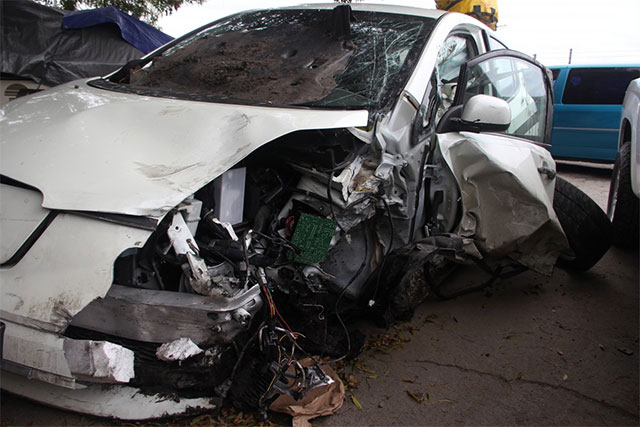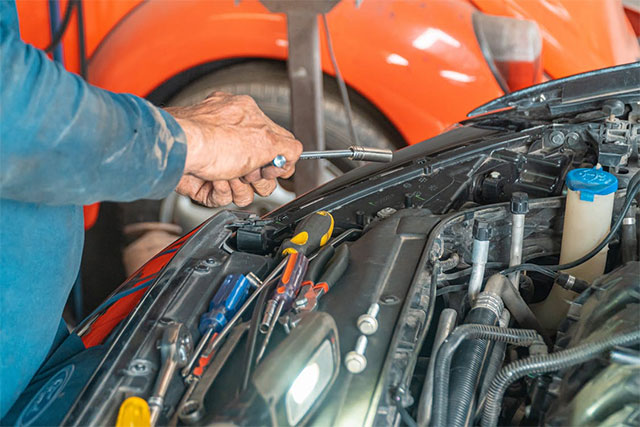Car crashes are an unfortunately common occurrence on American roads and highways. One of the most important questions that arises after a car crash is who can be held at-fault. Determining fault is critical to ensure that those responsible for a crash are held accountable for their actions and that victims are fairly compensated for their injuries and losses.
One way fault can be determined after a crash is by examining the damage to the vehicles involved in the crash. In this article, we will explore the question of whether fault can be determined by the damage after a car crash.
Table of Contents
The Role of Vehicle Damage in Determining Fault
Vehicle damage is often used as a key piece of evidence in determining fault after a collision. When two vehicles collide, they can cause significant damage to each other, and this damage can provide important clues about how the crash may have occurred.
There are a few reasons why vehicle damage can be used to determine fault. The direction and extent of the damage can provide important information about the force and angle of impact. For example, if one car has significant damage to its driver-side door, it suggests that the other car struck it from the side, showing that the other driver may have run a red light or failed to yield at an intersection.
The location of the vehicle damage can also be important. If one car has damage to its rear bumper and the other car has damage to its front end, it suggests that the car with the rear-end damage was struck from behind. Vehicle damage can provide insight into fault or help tell the story of what happened.
The type of damage can also be informative. If one car has damage to its front-end and the other car has damage to its side, it may suggest that one of the drivers was making a turn when the collision occurred. In this case, the driver who was turning may be at fault for failing to yield to oncoming traffic.
Limitations of Vehicle Damage in Determining Fault
While vehicle damage can be a useful tool in determining fault in a car accident, it may not tell the whole story of the crash. “While examining the damage to the vehicles involved in a car accident can provide important information, it is not a foolproof method for determining fault,” note personal injury attorneys at Manchin Injury Law Group, “The extent of the damage does not always explain who was at fault. For example, fault could be shared between both drivers.”
Single Vehicle Crashes
Not all accidents involve two vehicles colliding head-on. Some accidents involve a single vehicle colliding with a stationary object, such as a guardrail or a tree. In these cases, it may be difficult to determine who was at fault based on the damage to the vehicle alone.
Undetectable Damage
Not all accidents involve visible damage to the vehicles involved. In some cases, the damage may be minor or not immediately apparent. A car may have sustained internal damage that is not visible from the outside. In these cases, other evidence, such as witness testimony or surveillance footage, may be necessary to determine fault for the crash.
Multi-Car Crashes
Some accidents involve multiple vehicles colliding at the same time, such as a sudden stop accident. In these complex cases, it may be difficult to determine which driver was at fault for the initial collision. For example, if two cars collide at an intersection and then a third car collides with one of them, it may be difficult to assign liability to which of the first two drivers was at fault for the initial collision.
Crashes Not Caused by Driver Negligence
Some accidents involve factors that are not related to driver error. Auto part malfunctions, mechanical failure or road conditions can be the cause of some car crashes. In these cases, it may be difficult to determine who was at fault based on the damage to the vehicles alone.
Cars with Previous Damage
Cars that previously had damage prior to the collision at-hand may complicate or indicate the crash was worse than it was. Determining fault based solely off the car damage can wrongfully assume the car accident caused significant damage, when it did not.
Other Elements to Consider After a Crash
While vehicle damage can provide insight into who is responsible for a crash, it does not tell the entire story.
After a car crash, it is important to look at all the factors and evidence to help determine the cause of the crash and to help identify responsible parties. These include:
- Traffic Laws: The first factor that is considered when determining fault after a car crash is whether any traffic laws were broken. If one or more drivers were breaking traffic laws at the time of the collision, they may be found at fault for the accident.
- Scene of the Crash: The second factor that is considered when determining fault is clues at the accident scene, such as skid marks on the road and vehicle debris.
- Eyewitness Accounts: Eyewitness accounts can provide valuable information about what happened leading up to and during the car crash. Witness accounts can help determine who was at fault for the collision.
- Police Reports: Police reports provide an official record of what happened during the car crash and can be used to determine fault.
Video Footage: Video footage from traffic cameras or dashboard cameras can be used to help determine fault after a car crash. - Expert Testimony: In some cases, experts may be called in to provide testimony about the cause of the accident and who was at fault.
If you are curious about your rights after a crash caused by someone else’s negligence, contact an experienced attorney to explore your legal options for financial compensation.














